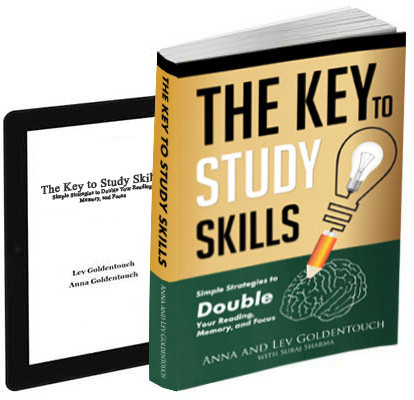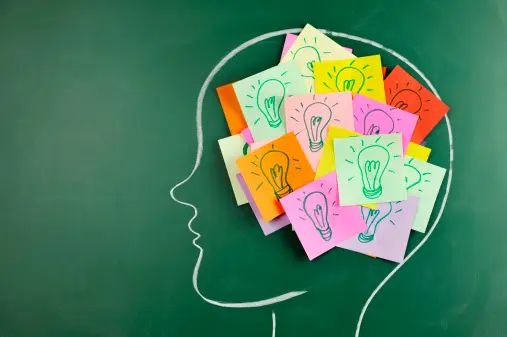Short-term memory (STM) is a fascinating aspect of human cognition. It allows individuals to retain information temporarily, enabling them to carry out daily tasks like recalling a phone number or completing a math problem. In 1959, Lloyd and Margaret Peterson conducted a seminal study to measure the decay rate of short-term memories. This research highlighted the vulnerability of short-term memory and has become a cornerstone in cognitive psychology.
This article delves into the details of the Peterson & Peterson (1959) study, explores its methodology and results, and analyzes its implications and subsequent research on short-term memory decay.
Understanding Short-Term Memory
The Role of Short-Term Memory
Short-term memory acts as a transient store that temporarily retains information before it either fades away or transfers to long-term memory. The capacity of short-term memory is limited and allows us to work with and manipulate a small amount of information for immediate tasks.
The Modal Model of Memory
The modal model, proposed by Atkinson and Shiffrin in 1968, is one of the most widely accepted models of memory. It proposes three main components:
- Sensory Memory: Captures stimuli from the environment for a brief period (milliseconds to seconds).
- Short-Term Memory: Holds information that can be consciously processed for immediate tasks (seconds to a minute).
- Long-Term Memory: Encodes and stores information for extended periods, potentially lifelong.
Short-term memory serves as a pivotal bridge between sensory and long-term memory. Understanding its decay rate is essential for comprehending human cognition and its limitations.
Memory Decay and Interference
Two major theories explain the loss of information from short-term memory:
- Decay Theory: Proposes that information fades from memory over time due to a lack of reinforcement or rehearsal.
- Interference Theory: Suggests that new information interferes with existing memories, causing them to become lost or distorted.
The Peterson & Peterson study primarily sought to investigate the decay theory by examining how information retention diminishes when rehearsal is prevented.
The Peterson & Peterson (1959) Study
Objectives
Lloyd and Margaret Peterson aimed to determine how quickly information stored in short-term memory would decay if rehearsal or reinforcement were inhibited. Their primary objective was to measure the exact timeline over which memory traces would deteriorate.
Methodology
The study employed an experimental design with the following key features:
- Participants: The study involved 24 psychology students at Indiana University as participants.
- Stimuli: Participants were given sets of three random consonants, known as trigrams (e.g., “JKB,” “DQR”).
- Rehearsal Prevention: To prevent participants from rehearsing the trigrams, they were asked to count backward by threes from a randomly selected number immediately after seeing a trigram. This task was meant to occupy short-term memory with unrelated information.
- Recall Intervals: Participants were tested at intervals ranging from 3 to 18 seconds after viewing the trigrams.
- Procedure:
- Participants were presented with a trigram and a random three-digit number.
- They were instructed to count backward from the given number to prevent rehearsal of the trigram.
- After a specific interval, they were asked to recall the original trigram.
Results
The results of the study revealed a significant decay in short-term memory over time:
- 3-Second Interval: After just 3 seconds, participants recalled approximately 80% of trigrams accurately.
- 6-Second Interval: Recall accuracy dropped to around 50% after 6 seconds.
- 9-Second Interval: Only about 35% of trigrams were recalled correctly.
- 12-Second Interval: Recall rates fell below 25%.
- 18-Second Interval: At the longest interval, less than 10% of participants could accurately recall the trigram.
The Petersons concluded that short-term memory decays rapidly and significantly when rehearsal is prevented. The memory traces appeared to fade almost entirely within 18 seconds, supporting the idea that information in short-term memory is highly transient.
Implications of the Peterson & Peterson Study
Supporting Decay Theory
The results of the Peterson & Peterson study strongly support the decay theory of short-term memory loss. It demonstrated that, in the absence of rehearsal, information retention diminishes rapidly over time.
Limitations of Short-Term Memory
The study highlighted the limited capacity and fragility of short-term memory, emphasizing the importance of rehearsal or other encoding strategies to retain information.
Influence on Memory Models
The Petersons’ research influenced subsequent memory models, reinforcing the idea that short-term memory serves as a temporary holding space before information is consolidated into long-term memory.
Practical Applications
Understanding the rapid decay of short-term memory can inform strategies for improving memory retention. Techniques such as chunking, mnemonics, and frequent repetition can help reinforce information and reduce decay.
Subsequent Research on Short-Term Memory Decay
Brown-Peterson Task
The Peterson & Peterson study’s experimental design became known as the Brown-Peterson task, named after John Brown and the Petersons, who independently developed similar experiments. It has since been widely used to study interference and the decay of short-term memory.
Variations and Re-Examinations
Subsequent researchers have explored variations of the Brown-Peterson task to address different aspects of short-term memory decay:
- Types of Stimuli: Some studies have used different types of stimuli, such as words or numbers, to examine whether decay rates vary based on stimulus characteristics.
- Interference vs. Decay: Some experiments aimed to distinguish between interference and decay by manipulating the amount or type of interference during the retention interval.
- Age Differences: Research has examined the effect of aging on short-term memory decay, revealing that older adults tend to show more significant declines in recall.
Working Memory Model
The concept of working memory, introduced by Baddeley and Hitch in the 1970s, expanded on the idea of short-term memory by incorporating active manipulation of information. This model proposes different components, such as the phonological loop and visuospatial sketchpad, each responsible for specific types of information. Research on short-term memory decay continues to inform our understanding of working memory capacity and functions.
Strategies for Improving Short-Term Memory Retention
Rehearsal Techniques
Rehearsal remains a foundational method for improving retention in short-term memory:
- Maintenance Rehearsal: Repeating information mentally or out loud to keep it in short-term memory.
- Elaborative Rehearsal: Connecting new information with existing knowledge or creating associations to facilitate long-term encoding.
Mnemonic Devices
Mnemonic devices help improve recall by organizing information into more memorable formats:
- Acronyms and Acrostics: Creating abbreviations or phrases to represent a list (e.g., “HOMES” for the Great Lakes).
- Rhymes and Songs: Setting information to music or rhythm aids memory retention.
Chunking
Breaking down complex information into manageable units (chunks) reduces the cognitive load on short-term memory. For instance, grouping a phone number into 3-3-4 digit patterns (e.g., 123-456-7890) makes it easier to remember.
Visualization
Creating vivid mental images of information can reinforce memory traces and improve recall.
Regular Review
Periodic review of previously learned information strengthens neural connections and reduces the risk of short-term memory decay.
Modern Research Developments on Short-Term Memory Decay
Since the original Peterson & Peterson study, modern cognitive psychology has continued to investigate and refine our understanding of short-term memory decay. Several new research strands have emerged, elaborating on and sometimes challenging the findings of the 1959 study.
1. Neurobiological Perspectives on STM
Recent advances in neuroimaging have allowed researchers to study STM decay on a neural level. Studies using functional MRI (fMRI) and electroencephalography (EEG) have revealed that:
- Prefrontal Cortex Involvement: The prefrontal cortex is crucial for maintaining information over short durations, especially in distraction-heavy environments. Decay in STM often corresponds with a decline in neural activation in this region.
- Hippocampal Contribution: While traditionally associated with long-term memory (LTM), the hippocampus also plays a role in STM, particularly when linking new information to existing knowledge.
- Neural Synchronization: Working memory capacity, which includes STM processes, depends on synchronized neural firing. A decrease in synchronization can lead to rapid forgetting.
These findings have refined our understanding of the brain mechanisms underpinning STM decay and pointed to biological constraints on cognitive capacity.
2. Rehearsal and Memory Strategies
Building on the Peterson & Peterson study, modern research has explored how different rehearsal and encoding strategies impact STM decay. Key findings include:
- Elaborative Rehearsal: Connecting new information with existing knowledge in meaningful ways helps mitigate the effects of decay. For instance, associating trigrams with words or phrases increases retention.
- Visual Imagery: Creating mental images of verbal information can improve STM retention. Visualization is particularly effective when learning new vocabulary or remembering sequences.
- Dual Coding: Using multiple sensory modalities, such as visual and auditory channels, reinforces memory. This technique is frequently employed in educational settings.
3. The Role of Working Memory
Alan Baddeley’s working memory model has become one of the most influential frameworks for understanding STM. The model comprises the following components:
- Phonological Loop: Responsible for storing verbal information temporarily, it corresponds closely to the type of memory measured in the Peterson & Peterson study.
- Visuospatial Sketchpad: Holds visual and spatial information, demonstrating that STM decay rates vary depending on information type.
- Central Executive: Coordinates information from the phonological loop and visuospatial sketchpad while managing attention and processing. Distractions that impair central executive function can lead to faster memory decay.
- Episodic Buffer: Integrates information across modalities into a coherent episodic memory, often bridging the gap between STM and LTM.
4. Factors Influencing Decay
Further research has highlighted various factors that can accelerate or slow STM decay:
- Stress and Anxiety: Both increase cognitive load, impairing the central executive’s ability to manage distractions, leading to faster decay.
- Sleep Deprivation: Lack of sleep diminishes the brain’s ability to maintain focus and retain new information.
- Age and Cognitive Decline: Older adults often exhibit faster STM decay due to natural cognitive decline, though exercise, diet, and cognitive training can moderate these effects.
- Medications and Neurotransmitters: Certain medications can either impair or enhance STM. For instance, stimulants like caffeine can temporarily improve STM, while benzodiazepines may reduce it.
Applications and Practical Implications
The knowledge gained from Peterson & Peterson and subsequent studies has broad applications:
1. Educational Strategies
Educators utilize STM research to improve teaching strategies:
- Spaced Repetition: Spreading out review sessions over time helps students counteract rapid decay.
- Mnemonics and Chunking: Using mnemonics and chunking strategies increases retention of large data sets.
- Interleaving Practice: Mixing different types of problems or tasks during study sessions prevents interference and strengthens memory connections.
2. User Experience Design
Designers of software and consumer products rely on memory decay principles to improve user experience:
- Information Density: Presenting information in manageable chunks prevents cognitive overload.
- Visual Cues: Visual cues guide users through processes without overburdening their STM.
- Feedback Mechanisms: Immediate feedback helps reinforce memory by providing opportunities for correction and learning.
3. Cognitive Behavioral Therapy
Therapists incorporate STM principles to help clients with memory-related disorders:
- Mindfulness Practices: Reducing distraction through mindfulness exercises can improve STM by increasing attention span.
- Cognitive Restructuring: Identifying and restructuring negative thoughts helps clients break cycles of anxiety that impair memory.
Challenges and Future Directions
Despite extensive progress, challenges remain:
1. Understanding Individual Differences
Researchers aim to understand why some individuals retain information better than others. Genetic differences, lifestyle, and early childhood experiences all contribute to memory capacity, requiring tailored cognitive training and rehabilitation.
2. Memory Decay in Neurological Disorders
Alzheimer’s disease, Parkinson’s disease, and other neurological disorders cause rapid memory decay. Understanding the decay mechanisms unique to each condition can lead to better therapeutic interventions.
3. Enhancing Memory Capacity
Cognitive enhancement remains a hot topic. While some studies focus on pharmacological solutions, others explore non-invasive brain stimulation or digital cognitive training.
Conclusion
The Peterson & Peterson (1959) study offered fundamental insights into the rapid decay of short-term memory. Although subsequent research has refined and expanded upon these findings, the essential notion remains: without active rehearsal or strategic encoding, our short-term memories are incredibly vulnerable. By acknowledging the fragile nature of STM and understanding the variables that influence decay, we can design more effective educational strategies, improve user experiences, and offer therapeutic support to those facing memory challenges.
Ultimately, the enduring legacy of the Peterson & Peterson study lies in its ability to stimulate further research into the intricacies of memory, shaping a deeper understanding of the mind and its limitations. With continued advancements in neuroscience and cognitive psychology, the future promises even greater insights into the mechanisms that underlie our fleeting but invaluable short-term memories.

Get 4 Free Sample Chapters of the Key To Study Book
Get access to advanced training, and a selection of free apps to train your reading speed and visual memory

